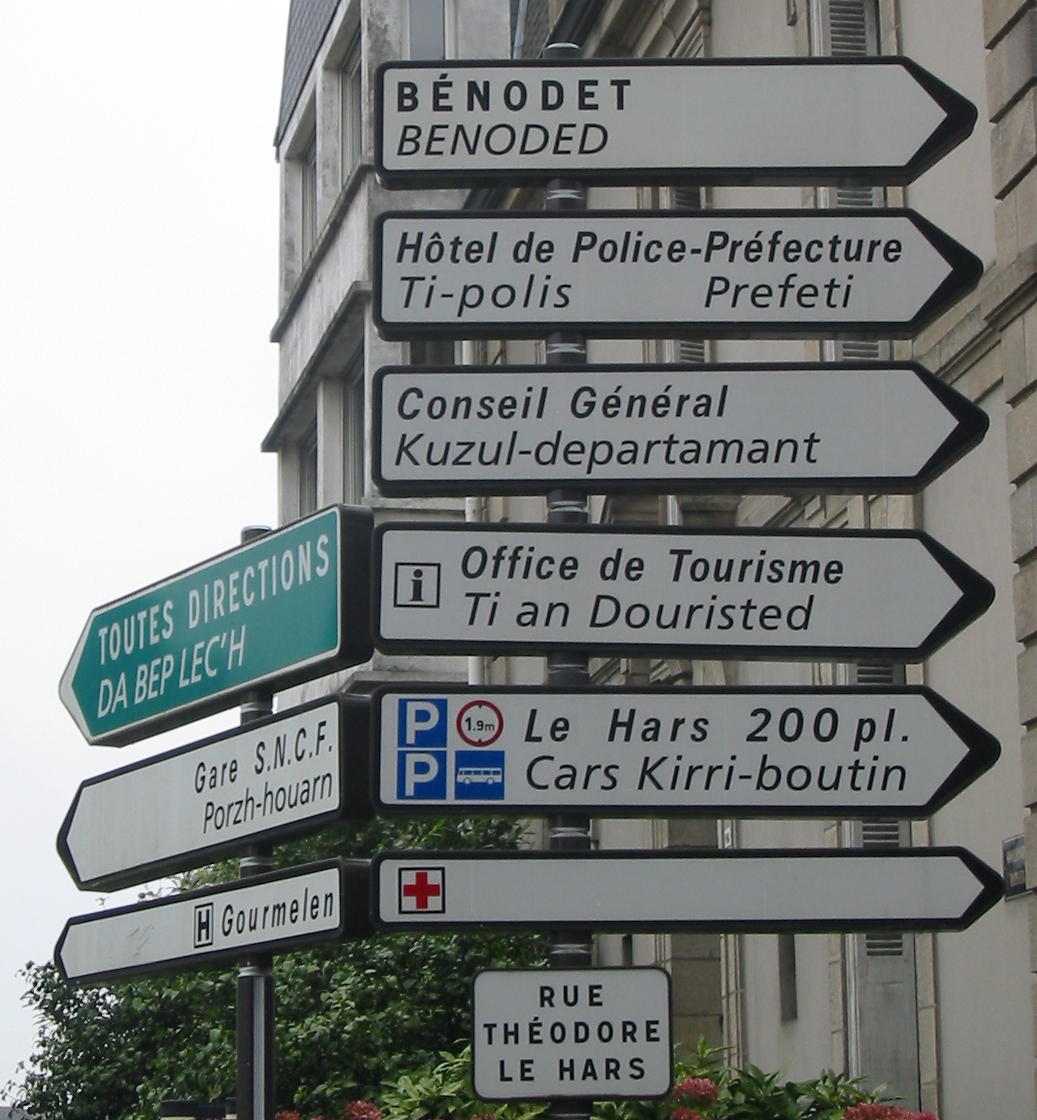That was Brançais. (Breton + French, I’m coining the term.) It means welcome to Brittany!

Brittany (Bretagne in French, Breizh in Breton) may be the least French region of France. The Celtic history of this northwestern peninsula has left a unique and fascinating legacy of culture and language, albeit endangered in modern times.
Human ancestors have lived in Brittany since the Stone Age. Many prehistoric sites can be visited today, including the Carnac stones.

Prior to the Roman conquest of Gaul, the area that is now Brittany was inhabited by five Celtic tribes. This population, largely rural, retained its culture during the Roman era. Later, near the end of the 4th century, Celtic peoples from Wales and the southwest of England migrated to the region. It is from this migration that the region derives its name.
For more on the history of Brittany, Encyclopedia Brittanica has a nice overview, and of course, Wikipedia.

By French standards, Brittany is a rugged, out-of-the-way destination. It’s off the beaten path for tourists as well, and that’s the tourists’ loss. Brittany has natural and cultural attractions that make for a great vacation or permanent residence. With a third of France’s coastline, many marine animals and birds can be seen along the shore and the hundreds of islands off the mainland. Inland, the land is forested, hilly and characterized by small villages, often highly picturesque. The principal cities are Nantes and Rennes, the latter of which has been listed as the best city in France for foreigners to live.

Language
As discussed in this week’s video, Brittany has a Celtic native language, although it is in rapid decline. Efforts are underway to revive Breton, but today’s speakers are almost all elderly. Still, if you travel to Brittany, you may see a few road signs in Breton.

Books
The ancient walled town of Saint Malo is Brittany’s most-visited attraction. It is also the setting for one of my favorite novels -indeed, a favorite novel of many readers – the Pulitzer-Prize winning All the Light We Cannot See by Anthony Doerr. Set during World War II, this moving story of two teenagers caught in war on opposite sides is one I highly recommend.
And, if you are at all tempted to visit or relocate to Brittany, pick up the charming memoir I’ll Never Be French by Mark Greenside, a New Yorker who moved to Brittany with his girlfriend. She left, he stayed, and he recounts his experiences integrating into a Breton village. He is grateful for the warmth and generosity of his neighbors, who welcome him and rescue him from numerous mishaps.
Finally, Honoré de Balzac set one of his novels in Brittany. Les Chouans is out of print in English, but you can find it for online to download for free.
Next week, we’ll take a look at some of the food of Brittany. There will be crêpes!

